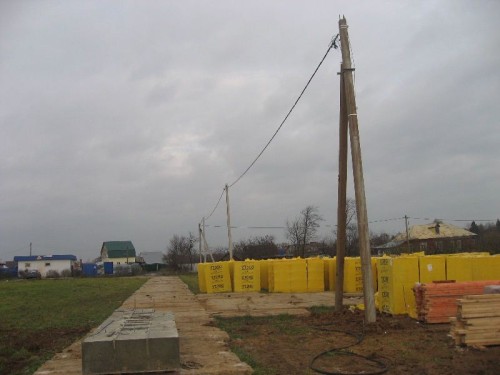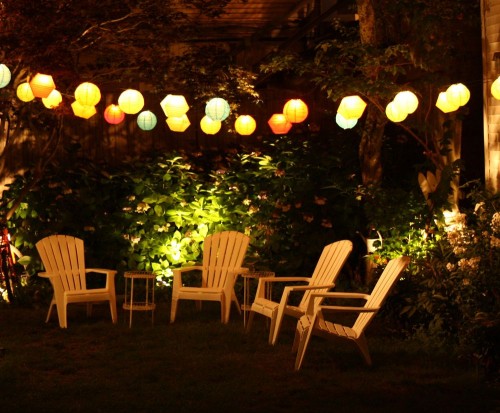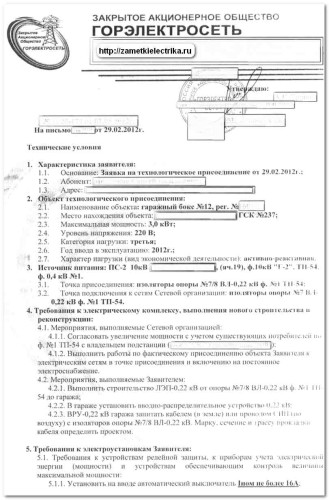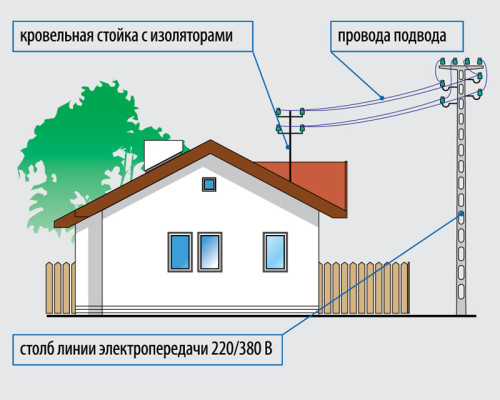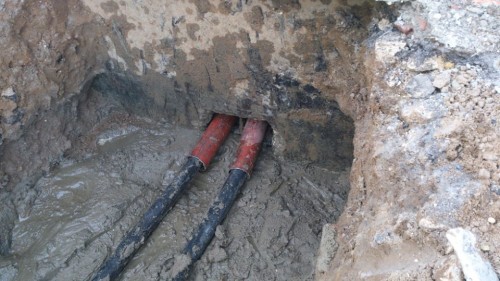When purchasing a land plot, the property arises quite a logical question about access to electrical networks. How to carry out electricity to the site and will be discussed in our article.
Content
Preparatory stage and documentation
To connect electricity to the site, at the initial stage you should obtain permits. To do this, visit the RES and submit:
- documents that will indicate the ownership of the owner for a purchased area;
- the plan of the territory to which electricity is planned;
- a certificate that certifies the presence (or absence) of various communication systems located near the site.
Immediately determine the power consumed. For a country house, this indicator can be completely different. The indicator of the total consumption of electrical energy is calculated with the presence of a sufficiently decent stock. Indeed, due to the emergence of new household appliances, an increase in the consumption of the amount of electricity is a completely predictable process.
Devices working with the help of electricity can be significantly larger than the owner of the country site often implies. In addition to household appliances used inside a residential building, electricity can be applied to:
- invaging engines intended for watering or opening garage doors;
- operation of the signaling system or video surveillance;
- heating water in the pool;
- launch of garden inventory (trimmers, lawn mowers);
- lighting tracks in the garden, fountains or separately located buildings.
After receiving the technical conditions, the development of the power supply project is being developed, which is agreed with specialists from district electrical networks. When searching for the designer, pay attention to two main criteria:
- the cost of connecting electricity to the site;
- a complete list of services.
In the process of registration of permits, you should write another application according to which the Master of the RES will be installed on the cable from the line located on the support post to the meter. Installation of the meter itself, which should be in hermetic shield, is carried out outside the building. After connecting to the power line, the RES worker seals the counter.
The process of connecting electricity in the country site itself is completed by the preparation and signing of documents confirming the performance of work (the act of the boundaries section, the act of technological connection, the act of fulfilling technical conditions, the test report, the protocol of measurement of electrical equipment).
If there is a properly decorated documentation, the resolution on the supply of electricity to the site can be obtained within a month. When developing the power supply scheme, the type of cable connection is determined. Conduct electricity to the land can be one of two ways:
- air;
- underground.
Air connection method
This method of supplying electricity is the fastest and cheap. It does not provide for earthworks. But there is a significant disadvantage. It lies in the negative impact of natural factors: snow, rain, squall wind. Based on this, only special waterproof accessories should be used.
Special attention is paid to prevent the cable break. The wire, entangled in the branches of trees or turned out to be on Earth, can cause the death of people. In this regard, the optimal length of the suspended cable should not be more than 15 m. Otherwise, there is a high probability of its break under the load of snow or icing.
To bring electricity to the site, you should use a special cable, which is called a SIP (self-supporting insulated wire). Its main elements are conductive veins, polyethylene insulation and a special cable due to which the strength characteristics of the cable increase.
There are several cable brands. To connect electricity to a country house, the CIP-4 wire is best suited. This cable has conductive veins made from aluminum and steel alloy. Depending on the amount of electricity consumed, a wire is used, a cross section of which is 16-25 mm².
Reliable CIP-4 fixation is carried out using anchor clamps. To attach each vein you need to have one clamp. In the presence of branches that come from the main cable, the clamps intended for these purposes are used.
Porcelain insulators are used for reliable intermediate cable mounting. When laying an electrical cable from the street inside the room, a through hole is made, which is insulated with plastic (with a stone wall) or a metal tab (wooden wall).
Underground connection method
This technology is of greater complexity and high cost. We will have to engage in the exercise of earthworks. But on the other hand, laying an electrical cable into a trench is the most secure. It will not be necessary to worry about the negative impact of natural factors. Yes, and any transport can take a place to the territory of the site.
Earthworks include the following steps:
- ring trench depth to 70-80 cm (below the level of freezing by 25-30 cm);
- sand backing with a layer of 15-20 cm;
- removal of glasses, stones and other garbage, which can damage the wire.
For an underground method, a wire without conductive livers or a special cable is used. Usually used two-phase cable, designed for voltage to 220V. But if you plan to use the equipment that will consume 360V, the corresponding three-phase meter and cable are purchased.
Laying the electrical wire is carried out in a corrugated pipe. The cable does not need to pull strongly. The wire laid in the pipe is covered with a 15-centimeter sand layer.
From random damage to the cable over sand, bricks or trimming of ceramic tiles can be laid. Entering the wire to the room is made in a similar way, as in the air method. Immediately you should take care of the grounding device for consumers of the electrical network and determining the exact number of protective automata.
Work on the connection of electricity to the site suggests strict adherence to the following security rules:
- laying the cable is not carried out during rain falling;
- when working, the electrician gloves and dry shoes that have rubberized soles are dressed.
Mandatory requirements for electrical wiring
There are several requirements, without which RES specialists will not be able to take the work on the conduct of electricity to the land plot. These include such conditions:
- the distance between the columns should not exceed 15 m;
- the distance from the poles to the house should be more than 10 m;
- the distance from the cable to buildings, buildings and crowns of trees should exceed 1.5 m;
- the height from the cable to the road should exceed 6 m;
- fastening the wires to the wall is carried out at a height below 2.75 m;
- it is forbidden to connect the wire above the roof of the house and buildings.
Video on how to carry out electricity to the plot:


